Abarth 500 595 695 vs VW ID.7 Touring – Performance, range & efficiency compared
Both models have their strengths – but which one suits you more?
Compare performance, efficiency, price and space directly: Abarth 500 595 695 or VW ID.7 Touring?
Costs and Efficiency:
When it comes to price and running costs, the biggest differences usually appear. This is often where you see which car fits your budget better in the long run.
Abarth 500 595 695 has a clearly advantage in terms of price – it starts at 32600 £, while the VW ID.7 Touring costs 47100 £. That’s a price difference of around 14499 £.
In terms of energy consumption, the advantage goes to the VW ID.7 Touring: with 14 kWh per 100 km, it’s evident more efficient than the Abarth 500 595 695 with 17.10 kWh. That’s a difference of about 3.10 kWh.
As for range, the VW ID.7 Touring performs decisively better – achieving up to 689 km, about 424 km more than the Abarth 500 595 695.
Engine and Performance:
Under the bonnet, it becomes clear which model is tuned for sportiness and which one takes the lead when you hit the accelerator.
When it comes to engine power, the VW ID.7 Touring has a clearly edge – offering 340 HP compared to 155 HP. That’s roughly 185 HP more horsepower.
In acceleration from 0 to 100 km/h, the VW ID.7 Touring is clearly perceptible quicker – completing the sprint in 5.50 s, while the Abarth 500 595 695 takes 7 s. That’s about 1.50 s faster.
In terms of top speed, the VW ID.7 Touring performs somewhat better – reaching 180 km/h, while the Abarth 500 595 695 tops out at 155 km/h. The difference is around 25 km/h.
There’s also a difference in torque: VW ID.7 Touring pulls convincingly stronger with 679 Nm compared to 235 Nm. That’s about 444 Nm difference.
Space and Everyday Use:
Cabin size, boot volume and payload all play a role in everyday practicality. Here, comfort and flexibility make the difference.
Seats: VW ID.7 Touring offers a bit more seating capacity – 5 vs 4.
In curb weight, Abarth 500 595 695 is significantly lighter – 1410 kg compared to 2191 kg. The difference is around 781 kg.
In terms of boot space, the VW ID.7 Touring offers decisively more room – 605 L compared to 185 L. That’s a difference of about 420 L.
In maximum load capacity, the VW ID.7 Touring performs convincingly better – up to 1714 L, which is about 1164 L more than the Abarth 500 595 695.
When it comes to payload, VW ID.7 Touring to a small extent takes the win – 465 kg compared to 385 kg. That’s a difference of about 80 kg.
Who wins the race?
The VW ID.7 Touring proves to be is largely superior and therefore becomes our DriveDuel Champion!
VW ID.7 Touring is the better all-rounder in this comparison.
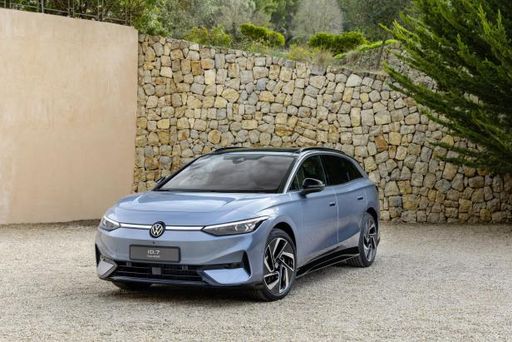 @ Volkswagen
@ Volkswagen
VW ID.7 Touring
Abarth 500 595 695
The Abarth 500, particularly in its 595 and 695 renditions, captures the spirit of Italian motoring with its compact yet aggressive design. Known for its lively performance and distinctive styling, this little powerhouse is a joy to drive, offering an engaging experience that appeals to enthusiasts. With its rich motorsport heritage, the Abarth 500 embodies the essence of fun and excitement on both the streets and the race track.
details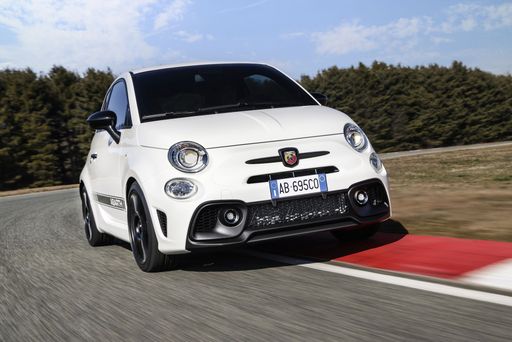 @ Abarth / Stellantis Media
@ Abarth / Stellantis Media
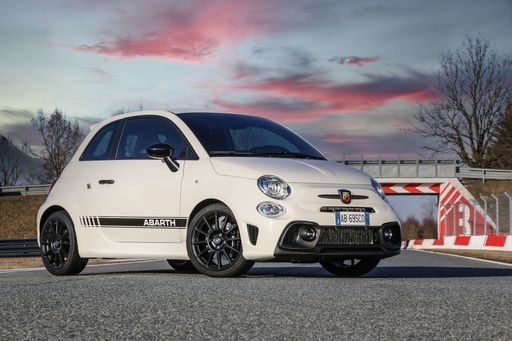 @ Abarth / Stellantis Media
@ Abarth / Stellantis Media
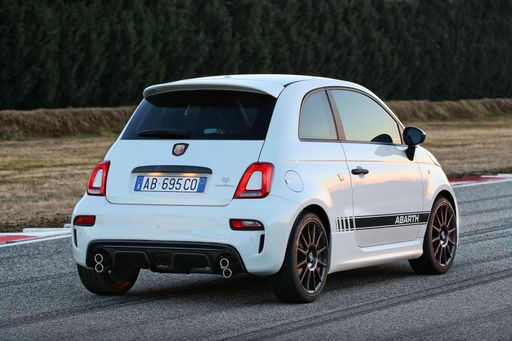 @ Abarth / Stellantis Media
@ Abarth / Stellantis Media
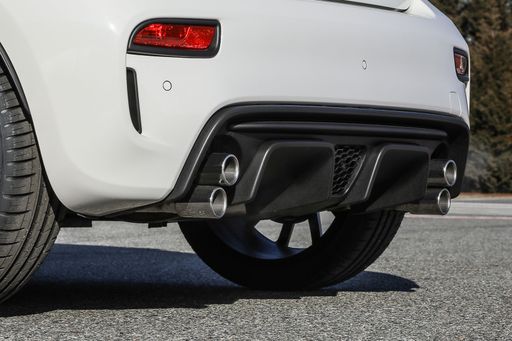 @ Abarth / Stellantis Media
@ Abarth / Stellantis Media
 @ Abarth / Stellantis Media
@ Abarth / Stellantis Media
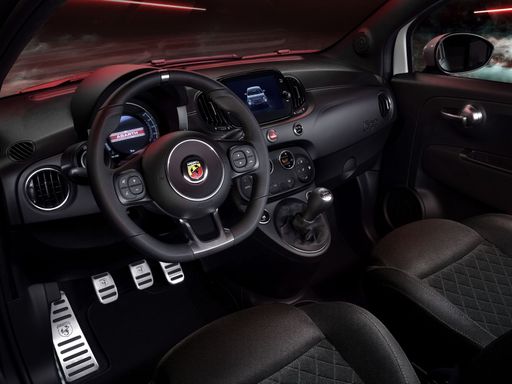 @ Abarth / Stellantis Media
@ Abarth / Stellantis Media
VW ID.7 Touring
The VW ID.7 Touring represents a new chapter in Volkswagen's electric vehicle lineup, offering a seamless blend of style and sustainability. This estate car is designed to provide ample space and comfort for both passengers and luggage, making it ideal for long journeys. With advanced technology features and a focus on eco-friendly performance, the ID.7 Touring is set to appeal to environmentally conscious drivers who don’t want to compromise on practicality or luxury.
details @ Volkswagen
@ Volkswagen
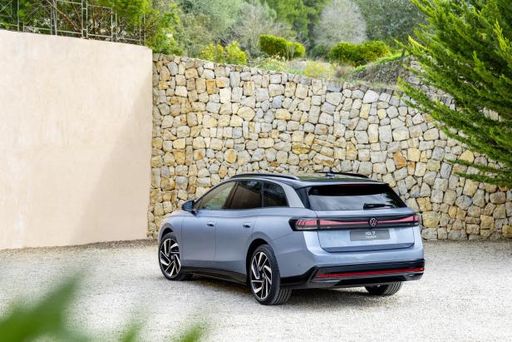 @ Volkswagen
@ Volkswagen
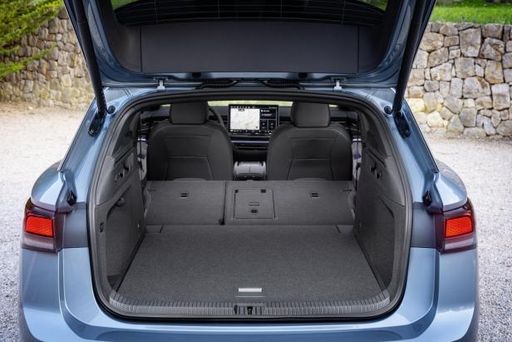 @ Volkswagen
@ Volkswagen
 @ Abarth / Stellantis Media
@ Abarth / Stellantis Media
|
 @ Volkswagen
@ Volkswagen
|
|
|
|
Costs and Consumption |
|
|---|---|
|
Price
32600 - 39400 £
|
Price
47100 - 54900 £
|
|
Consumption L/100km
-
|
Consumption L/100km
-
|
|
Consumption kWh/100km
17.1 - 18.8 kWh
|
Consumption kWh/100km
14 - 16.6 kWh
|
|
Electric Range
242 - 265 km
|
Electric Range
584 - 689 km
|
|
Battery Capacity
37.80 kWh
|
Battery Capacity
77 - 86 kWh
|
|
co2
0 g/km
|
co2
0 g/km
|
|
Fuel tank capacity
-
|
Fuel tank capacity
-
|
Dimensions and Body |
|
|---|---|
|
Body Type
Hatchback
|
Body Type
Estate
|
|
Seats
4
|
Seats
5
|
|
Doors
3
|
Doors
5
|
|
Curb weight
1410 - 1435 kg
|
Curb weight
2191 - 2336 kg
|
|
Trunk capacity
185 L
|
Trunk capacity
605 L
|
|
Length
3673 mm
|
Length
4961 mm
|
|
Width
1682 mm
|
Width
1862 mm
|
|
Height
1518 mm
|
Height
1549 - 1551 mm
|
|
Max trunk capacity
550 L
|
Max trunk capacity
1714 L
|
|
Payload
370 - 385 kg
|
Payload
459 - 465 kg
|
Engine and Performance |
|
|---|---|
|
Engine Type
Electric
|
Engine Type
Electric
|
|
Transmission
Automatic
|
Transmission
Automatic
|
|
Transmission Detail
-
|
Transmission Detail
Reduction Gearbox
|
|
Drive Type
Front-Wheel Drive
|
Drive Type
Rear-Wheel Drive, All-Wheel Drive
|
|
Power HP
155 HP
|
Power HP
286 - 340 HP
|
|
Acceleration 0-100km/h
7 s
|
Acceleration 0-100km/h
5.5 - 6.7 s
|
|
Max Speed
155 km/h
|
Max Speed
180 km/h
|
|
Torque
235 Nm
|
Torque
545 - 679 Nm
|
|
Number of Cylinders
-
|
Number of Cylinders
-
|
|
Power kW
114 kW
|
Power kW
210 - 250 kW
|
|
Engine capacity
-
|
Engine capacity
-
|
General |
|
|---|---|
|
Model Year
2023
|
Model Year
2024
|
|
CO2 Efficiency Class
A
|
CO2 Efficiency Class
A
|
|
Brand
Abarth
|
Brand
VW
|
Is the Abarth 500 595 695 offered with different drivetrains?
The Abarth 500 595 695 is offered with Front-Wheel Drive.
The prices and data displayed are estimates based on German list prices and may vary by country. This information is not legally binding.
